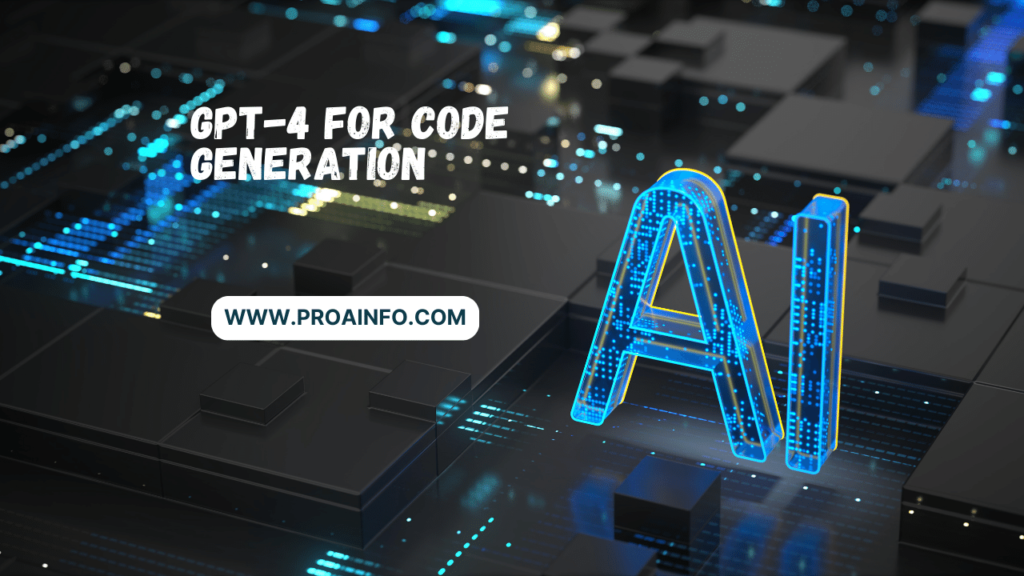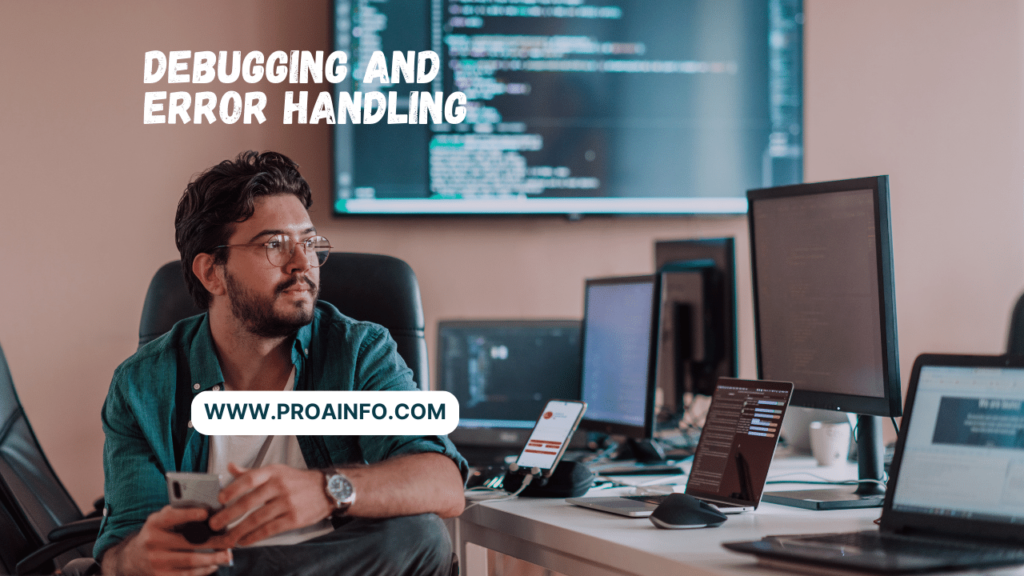Claude 3 Opus vs GPT-4 for Coding. In the rapidly evolving world of artificial intelligence (AI), two powerhouse language models have emerged as frontrunners in the realm of coding and software development: Claude 3 Opus, developed by Anthropic, and GPT-4, the latest iteration of OpenAI’s Generative Pre-trained Transformer (GPT) series. As developers and tech enthusiasts alike grapple with the complexities of these cutting-edge AI tools, a thorough comparison becomes imperative to navigate their strengths, weaknesses, and potential applications.
This article delves deep into the core capabilities, performance metrics, and unique features of Claude 3 Opus and GPT-4, providing a comprehensive analysis to aid developers in making informed decisions about which model best suits their coding needs. From code generation and debugging to natural language processing and beyond, we’ll explore the nuances that set these AI giants apart, shedding light on their respective strengths and areas for improvement.
Key Aspects Covered
- Model Architecture and Training: Exploring the underlying architectures and training methodologies that shape the capabilities of Claude 3 Opus and GPT-4.
- Code Generation and Comprehension: Assessing the proficiency of each model in generating accurate and efficient code across various programming languages and domains.
- Natural Language Processing: Evaluating the models’ abilities to understand and process human language, a crucial aspect for effective coding assistance and collaboration.
- Debugging and Error Handling: Examining the prowess of Claude 3 Opus and GPT-4 in identifying and resolving code errors, a critical skill for streamlining development processes.
- Performance and Efficiency: Analyzing the computational resources required by each model, as well as their speed and scalability in handling complex coding tasks.
- Use Cases and Applications: Highlighting potential real-world applications and scenarios where each model excels, providing developers with a roadmap for leveraging their capabilities effectively.
- Limitations and Future Directions: Acknowledging the current constraints and exploring the future trajectories of these language models, paving the way for continued advancements in AI-assisted coding.
Whether you’re a seasoned developer seeking to optimize your workflow or a curious learner exploring the frontiers of AI, this comprehensive comparison will equip you with the insights necessary to navigate the rapidly evolving landscape of AI-powered coding tools.
Model Architecture and Training

The foundation of any language model’s capabilities lies in its underlying architecture and training methodology. Both Claude 3 Opus and GPT-4 employ transformer-based architectures, but their specific implementations and training approaches differ, leading to unique strengths and limitations.
Claude 3 Opus Architecture
Claude 3 Opus is a large language model developed by Anthropic, a research company focused on developing safe and ethical artificial intelligence systems. The model is built upon a transformer architecture, which excels at capturing long-range dependencies in sequential data, making it well-suited for natural language processing tasks.
One of the key features of Claude 3 Opus is its emphasis on safety and ethical considerations. Anthropic has implemented various techniques to mitigate potential biases and harmful outputs, such as constitutional AI, which involves training the model to adhere to a set of predefined rules and principles.
GPT-4 Architecture
GPT-4, the latest iteration of OpenAI’s GPT series, is a powerful language model that builds upon the success of its predecessors, GPT-3 and GPT-3.5. Like previous GPT models, GPT-4 is based on a transformer architecture, but it incorporates several architectural improvements and refinements.
One notable advancement in GPT-4 is the use of multi-modal training, which allows the model to process and generate not only text but also images, video, and audio data. This multi-modal capability opens up new possibilities for tasks that involve multiple modalities, such as image captioning, video analysis, and audio transcription.
Training Data and Approaches

The training data and methodologies employed for Claude 3 Opus and GPT-4 play a crucial role in shaping their respective capabilities and biases.
Anthropic has been relatively opaque about the specific details of Claude 3 Opus’s training data and process. However, they have emphasized their commitment to curating high-quality datasets and implementing techniques to mitigate potential biases and harmful outputs.
On the other hand, OpenAI has been more transparent about GPT-4’s training process. The model was trained on a vast corpus of data spanning a wide range of domains, including websites, books, academic papers, and code repositories. OpenAI has also employed various techniques to improve the model’s safety and robustness, such as adversarial training and reinforcement learning from human feedback.
While both models have undergone extensive training on vast datasets, the specific curation and preprocessing techniques employed may contribute to differences in their performance and biases across various tasks.
Code Generation and Comprehension
One of the primary applications of language models like Claude 3 Opus and GPT-4 is in the realm of code generation and comprehension. These models’ ability to understand and generate code across various programming languages and domains has the potential to revolutionize software development workflows.
Claude 3 Opus for Code Generation
Anthropic has positioned Claude 3 Opus as a capable language model for coding tasks. The model has demonstrated proficiency in generating code snippets, functions, and even entire programs across a wide range of programming languages, including Python, Java, C++, and more.
One of the strengths of Claude 3 Opus lies in its ability to understand natural language prompts and translate them into functional code. Developers can describe their desired functionality in plain English, and the model can generate the corresponding code, facilitating a more intuitive and collaborative development process.
GPT-4 for Code Generation

GPT-4’s code generation capabilities have been extensively showcased by OpenAI, with the model demonstrating impressive results across various coding challenges and tasks. Like Claude 3 Opus, GPT-4 can understand natural language prompts and generate code in a wide range of programming languages.
However, GPT-4’s multi-modal training approach may give it an edge in certain coding scenarios that involve multiple modalities. For example, the model could potentially generate code based on visual inputs or integrate image processing functionality into its generated programs.
Code Comprehension and Documentation
Beyond code generation, both Claude 3 Opus and GPT-4 excel at code comprehension and documentation tasks. These models can analyze existing codebases, understand their functionality, and provide insightful explanations and comments, facilitating code maintainability and knowledge transfer within development teams.
Additionally, both models can assist in generating comprehensive documentation, including API references, user guides, and tutorials, based on the codebase they analyze. This capability can streamline the documentation process and ensure that code documentation remains up-to-date and accurate.
Natural Language Processing
Natural language processing (NLP) is a critical component of AI-assisted coding, as it enables developers to communicate with the language models using natural language prompts and queries. Both Claude 3 Opus and GPT-4 possess robust NLP capabilities, but their approaches and strengths may vary.
Claude 3 Opus NLP Capabilities
Anthropic has emphasized the importance of natural language processing in the development of Claude 3 Opus. The model’s architecture is designed to excel at understanding and generating human-like text, making it well-suited for tasks that involve natural language interactions.
One of the key strengths of Claude 3 Opus’s NLP capabilities is its ability to engage in conversational interactions. The model can understand context, follow complex dialogues, and provide coherent and relevant responses, enabling developers to engage in back-and-forth conversations to refine their coding requirements and receive targeted assistance.
GPT-4 NLP Capabilities
OpenAI has also invested significant efforts into enhancing GPT-4’s natural language processing capabilities. The model’s multi-modal training approach allows it to process and generate text in conjunction with other modalities, such as images and audio, potentially enabling more sophisticated NLP applications.
GPT-4’s NLP capabilities extend beyond just understanding and generating text. The model can also perform tasks like text summarization, language translation, and sentiment analysis, making it a versatile tool for a wide range of natural language processing tasks relevant to coding and software development.
Debugging and Error Handling

Debugging and error handling are crucial aspects of the software development process, and language models like Claude 3 Opus and GPT-4 can potentially streamline these tasks by assisting developers in identifying and resolving code issues.
Here’s the continuation of the article:
Claude 3 Opus for Debugging and Error Handling
One of the notable features of Claude 3 Opus in debugging is its ability to provide step-by-step explanations of code execution and error propagation. This can be particularly valuable for developers who are learning new programming languages or tackling complex codebases, as it can help them understand the root causes of errors and develop a deeper understanding of the codebase.
Additionally, Claude 3 Opus can suggest alternative approaches or refactoring strategies to improve code quality and maintainability, further enhancing the debugging and optimization process.
GPT-4 for Debugging and Error Handling
GPT-4’s prowess in debugging and error handling is another area where its multi-modal capabilities may prove advantageous. The model can leverage visual cues, such as code snippets or error messages displayed in images or screenshots, to better understand and diagnose coding issues.
Furthermore, GPT-4’s advanced natural language processing capabilities enable it to comprehend and communicate complex error messages and debugging information effectively, potentially making it easier for developers to understand and resolve coding issues.
OpenAI has also demonstrated GPT-4’s ability to generate test cases and perform code reviews, which can help catch potential errors and vulnerabilities before they manifest in production environments.
Performance and Efficiency
As language models continue to grow in size and complexity, their computational requirements and efficiency become increasingly important considerations, especially in the context of coding and software development, where performance can directly impact productivity and user experience.
Claude 3 Opus Performance and Efficiency
Anthropic has designed Claude 3 Opus with a focus on efficiency and scalability. While the model’s exact computational requirements and hardware specifications are not publicly disclosed, Anthropic has emphasized their commitment to developing AI systems that are both powerful and resource-efficient.
One potential advantage of Claude 3 Opus is its ability to adapt to different hardware configurations and resource constraints. Anthropic has explored techniques like model parallelism and efficient inference strategies, which could enable Claude 3 Opus to be deployed on a wide range of devices and infrastructures, from powerful cloud servers to edge computing devices.
GPT-4 Performance and Efficiency
As OpenAI’s flagship language model, GPT-4 is expected to be computationally demanding, particularly when leveraging its multi-modal capabilities or tackling complex coding tasks. However, OpenAI has invested significant resources into optimizing the model’s performance and efficiency.
One approach OpenAI has taken is to leverage advanced hardware accelerators, such as GPUs and TPUs, to accelerate the model’s inference and training processes. Additionally, they have explored techniques like model quantization and pruning to reduce the model’s memory footprint and computational requirements without significantly impacting its performance.
It’s worth noting that both Claude 3 Opus and GPT-4 are constantly evolving, and their performance and efficiency metrics may change as new iterations and optimizations are introduced.
Use Cases and Applications
The versatility of Claude 3 Opus and GPT-4 extends across a wide range of coding and software development use cases and applications. While both models have overlapping capabilities, their unique strengths and specializations may make them better suited for certain tasks or domains.
Claude 3 Opus Use Cases
Anthropic has positioned Claude 3 Opus as a general-purpose language model with a strong emphasis on coding and software development. Some potential use cases for Claude 3 Opus include:
- Code Generation and Assistance: Developers can leverage Claude 3 Opus to generate code snippets, functions, or entire programs based on natural language prompts or specifications, streamlining the development process and reducing the time and effort required for coding tasks.
- Code Debugging and Optimization: Claude 3 Opus can assist in identifying and resolving code errors, as well as suggesting optimizations and refactoring strategies to improve code quality and maintainability.
- Natural Language Programming: With its strong natural language processing capabilities, Claude 3 Opus can enable developers to write code using natural language prompts, potentially lowering the barrier to entry for programming and making coding more accessible to a broader audience.
- Code Documentation and Explanation: Claude 3 Opus can generate comprehensive documentation and explanations for existing codebases, facilitating knowledge transfer and collaboration within development teams.
- Ethical AI Development: Anthropic’s emphasis on safety and ethical considerations in the development of Claude 3 Opus makes it a suitable choice for projects that require a high degree of transparency, fairness, and accountability in AI systems.
GPT-4 Use Cases
As OpenAI’s most advanced language model to date, GPT-4 has a wide range of potential applications in coding and software development, including:
- Multi-modal Coding: GPT-4’s multi-modal capabilities open up new possibilities for coding tasks that involve multiple modalities, such as image processing, computer vision, and audio analysis.
- Code Generation and Comprehension: Like Claude 3 Opus, GPT-4 can generate code snippets, functions, and programs based on natural language prompts, as well as understand and analyze existing codebases.
- Natural Language Processing for Coding: GPT-4’s advanced natural language processing capabilities make it well-suited for tasks that involve understanding and processing natural language in the context of coding, such as code documentation, code search, and code comprehension.
- Code Testing and Review: GPT-4 can assist in generating test cases, performing code reviews, and identifying potential vulnerabilities or issues in codebases, enhancing the overall quality and security of software development projects.
- Rapid Prototyping and Experimentation: With its powerful multi-modal and natural language processing capabilities, GPT-4 can facilitate rapid prototyping and experimentation in various coding domains, enabling developers to quickly iterate and explore new ideas.
It’s important to note that the specific use cases and applications of Claude 3 Opus and GPT-4 will continue to evolve as these language models are further developed and refined, and as new techniques and methodologies emerge in the field of AI-assisted coding.
Limitations and Future Directions
While Claude 3 Opus and GPT-4 represent significant advancements in the field of AI-assisted coding, they are not without their limitations and challenges. Acknowledging these limitations is crucial for responsible and effective use of these language models, and for driving future research and development efforts.
Limitations of Claude 3 Opus and GPT-4
- Bias and Fairness: Despite efforts to mitigate biases, language models like Claude 3 Opus and GPT-4 may still exhibit biases inherited from their training data or inadvertently introduced during the training process. Continuous monitoring and adjustment are necessary to ensure fair and unbiased outputs.
- Reproducibility and Consistency: The outputs generated by these models can be inconsistent or even contradictory at times, which can be problematic in coding scenarios where consistency and reproducibility are essential.
- Security and Robustness: Language models are susceptible to various security vulnerabilities, such as adversarial attacks or prompting attacks, which could potentially compromise the integrity and reliability of their outputs.
- Domain Specificity: While Claude 3 Opus and GPT-4 are versatile models, their performance may vary across different coding domains or programming languages, potentially requiring further fine-tuning or specialization for optimal results.
- Interpretability and Explainability: Despite their impressive capabilities, the inner workings and decision-making processes of these large language models remain largely opaque, posing challenges in terms of interpretability and explainability, which are crucial for building trust and accountability in AI systems.
Future Directions
As the field of AI-assisted coding continues to evolve, several promising research directions and future developments are on the horizon:
- Multimodal Integration: Incorporating more advanced multimodal capabilities, such as integrating visual inputs (e.g., diagrams, flowcharts) or leveraging speech recognition and generation, could further enhance the coding experience and enable new use cases.
- Continuous Learning and Adaptation: Developing mechanisms for continuous learning and adaptation could allow language models to stay up-to-date with the latest coding practices, frameworks, and technologies, ensuring their relevance and effectiveness in rapidly changing software development landscapes.
- Improved Interpretability and Explainability: Advancements in interpretability and explainability techniques could shed light on the inner workings of these language models, fostering trust and enabling more transparent and accountable AI-assisted coding solutions.
- Domain-Specific Specialization: While general-purpose language models are valuable, further specialization and fine-tuning for specific coding domains or programming languages could unlock even more targeted and efficient AI-assisted coding experiences.
- Collaborative Human-AI Coding: Exploring new paradigms for collaborative human-AI coding, where developers and language models work together in a seamless and synergistic manner, could revolutionize the way software is developed and further amplify human productivity and creativity.
As Claude 3 Opus, GPT-4, and other language models for coding continue to evolve, it is crucial for researchers, developers, and industry leaders to remain vigilant about the ethical and societal implications of these powerful technologies. Responsible development, deployment, and governance frameworks will be essential to ensure that AI-assisted coding tools are leveraged in a manner that benefits humanity while mitigating potential risks and unintended consequences.
Conclusion
In the rapidly progressing field of AI-assisted coding, Claude 3 Opus and GPT-4 stand as two formidable language models, each boasting a unique set of strengths and capabilities. This comprehensive comparison has shed light on the nuances that distinguish these AI giants, providing developers and tech enthusiasts with a deeper understanding of their respective architectures, performance metrics, and potential applications.
While both models have demonstrated impressive prowess in code generation, natural language processing, and debugging, their distinct training approaches and specializations have carved out different niches for their optimal utilization. Claude 3 Opus’s emphasis on safety, ethical considerations, and efficient coding assistance positions it as a reliable choice for projects that prioritize transparency, fairness, and streamlined development workflows. On the other hand, GPT-4’s multi-modal capabilities and advanced natural language processing open up new frontiers in coding tasks that involve multiple modalities, rapid prototyping, and experimentation.
As the landscape of AI-assisted coding continues to evolve, the limitations and challenges faced by these language models must be acknowledged and addressed through ongoing research and development efforts. Advancements in areas such as interpretability, explainability, and continuous learning will be crucial for fostering trust, accountability, and long-term relevance of these AI-powered coding tools.
Ultimately, the choice between Claude 3 Opus and GPT-4 will depend on the specific requirements and priorities of each project, as well as the developer’s familiarity and comfort level with these technologies. What remains clear is that the integration of AI into the coding and software development process is no longer a distant prospect but a reality that is rapidly reshaping the way we create and innovate.
As we navigate this exciting era of AI-assisted coding, it is essential to approach these powerful tools with a balanced perspective, embracing their potential while remaining vigilant about their limitations and ethical implications. By doing so, we can harness the transformative power of AI to enhance human productivity, creativity, and innovation in the realm of software development, while ensuring that these technologies are developed and deployed in a responsible and ethical manner.
FAQs
What programming languages are supported by Claude 3 Opus and GPT-4?
Both Claude 3 Opus and GPT-4 have been trained on a vast amount of data, allowing them to generate code and provide assistance across a wide range of programming languages, including Python, Java, C++, JavaScript, Ruby, and many others. However, their performance and proficiency may vary across different languages and domains.
Can these language models completely replace human developers?
No, while Claude 3 Opus and GPT-4 are highly capable in assisting with coding tasks, they are not intended to replace human developers entirely. These language models are tools designed to augment and support the work of human developers, not to replace them. Human expertise, creativity, and domain knowledge remain crucial in software development.
How do Claude 3 Opus and GPT-4 handle code errors and debugging?
Both models have demonstrated impressive capabilities in identifying and resolving code errors, as well as providing step-by-step explanations of code execution and error propagation. They can analyze codebases, suggest fixes, and offer optimization strategies to improve code quality and maintainability.
Are there any security or privacy concerns with using these language models for coding?
Like any AI system, there are potential security and privacy risks associated with using Claude 3 Opus and GPT-4 for coding tasks. These models may inadvertently generate insecure code or introduce vulnerabilities if not properly monitored and controlled. Additionally, the training data used by these models could potentially contain sensitive or proprietary information, raising privacy concerns.
How do Claude 3 Opus and GPT-4 handle code documentation and explanation?
Both models excel at generating comprehensive documentation, including API references, user guides, and tutorials based on the codebase they analyze. They can also provide insightful explanations and comments, facilitating code maintainability and knowledge transfer within development teams.
Can these language models assist with code testing and review?
Yes, both Claude 3 Opus and GPT-4 have demonstrated capabilities in generating test cases, performing code reviews, and identifying potential vulnerabilities or issues in codebases. This can enhance the overall quality and security of software development projects.
How do the performance and computational requirements of Claude 3 Opus and GPT-4 compare?
While exact performance and computational requirements are not publicly disclosed, GPT-4 is expected to be more computationally demanding, particularly when leveraging its multi-modal capabilities or tackling complex coding tasks. Anthropic has emphasized the efficiency and scalability of Claude 3 Opus, suggesting it may have a smaller computational footprint.
What are the main limitations of using these language models for coding?
Some key limitations include potential biases inherited from training data, inconsistency or lack of reproducibility in outputs, security vulnerabilities, domain specificity (performance may vary across coding domains), and challenges with interpretability and explainability of the models’ decision-making processes.







